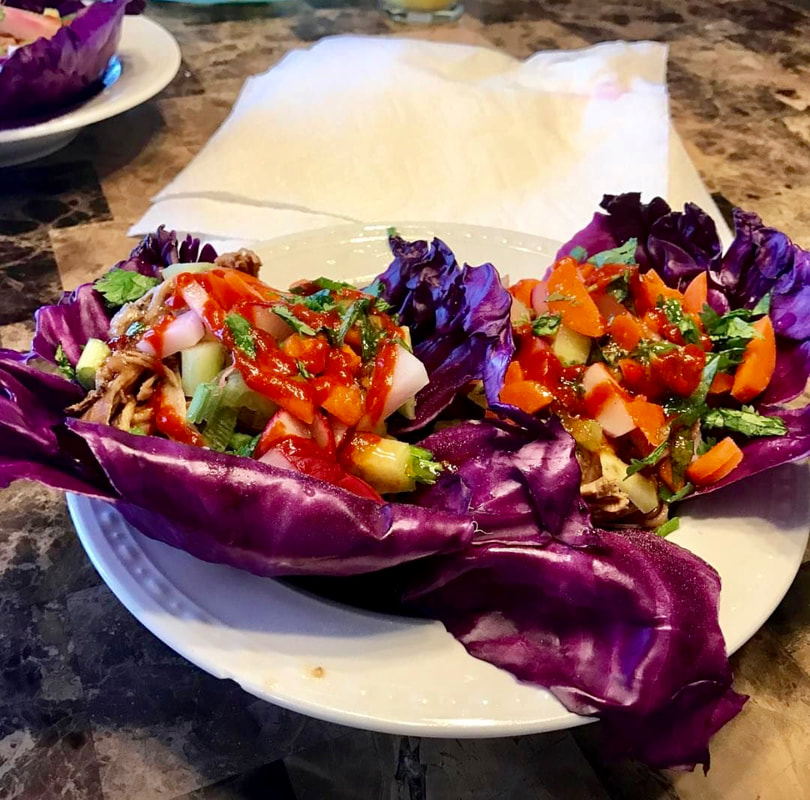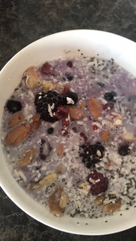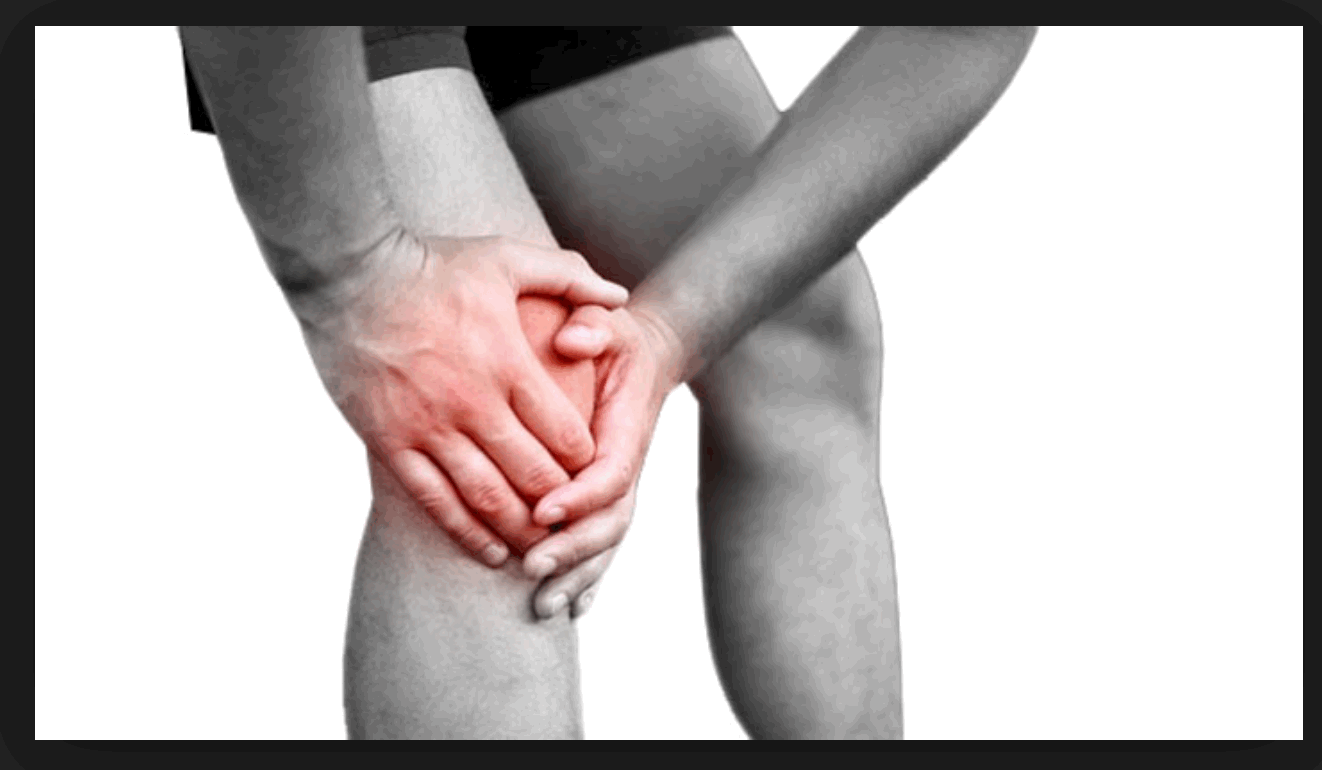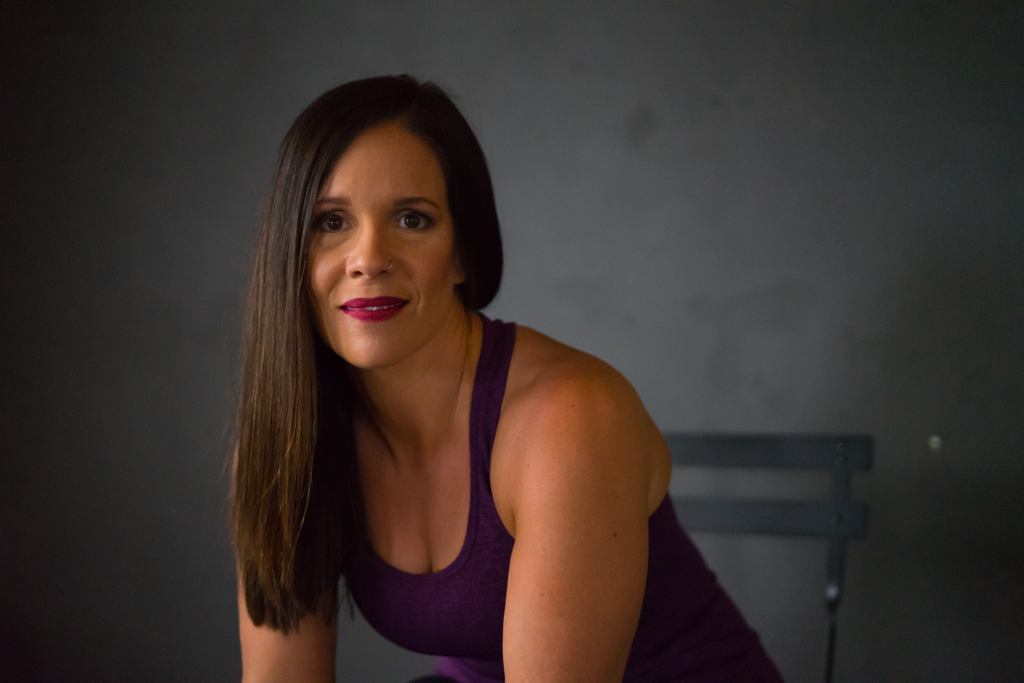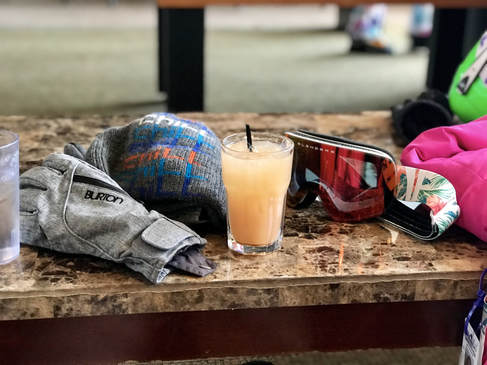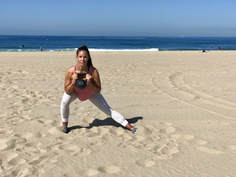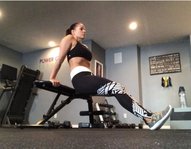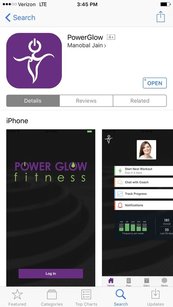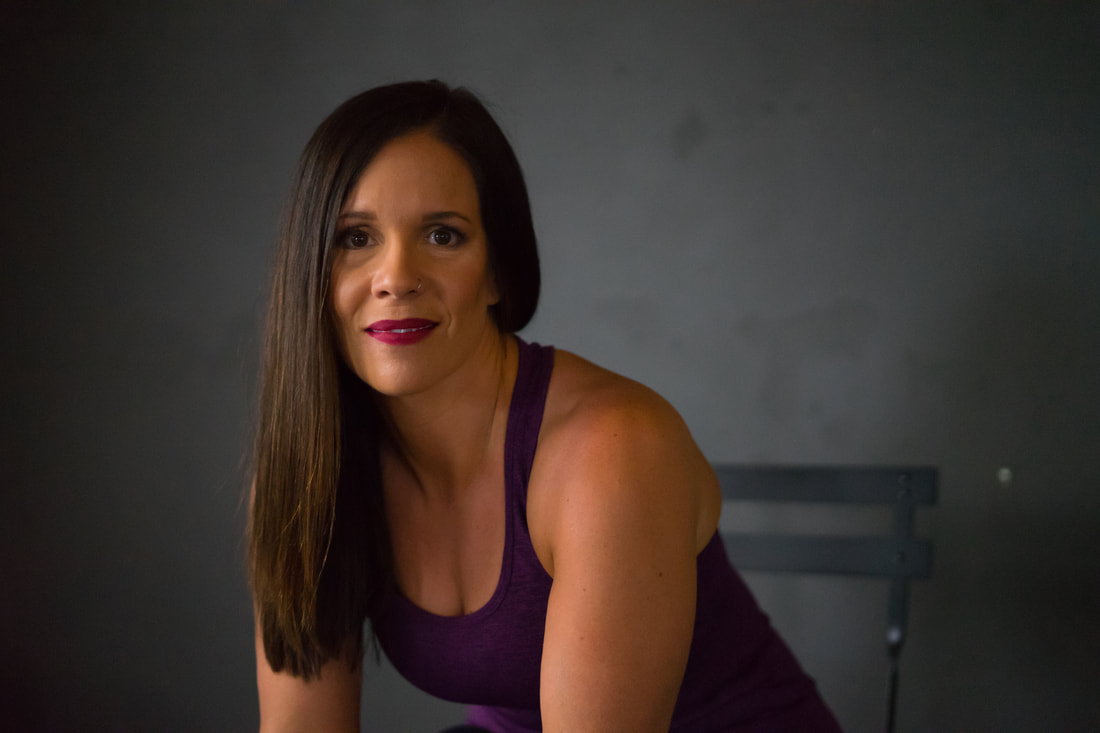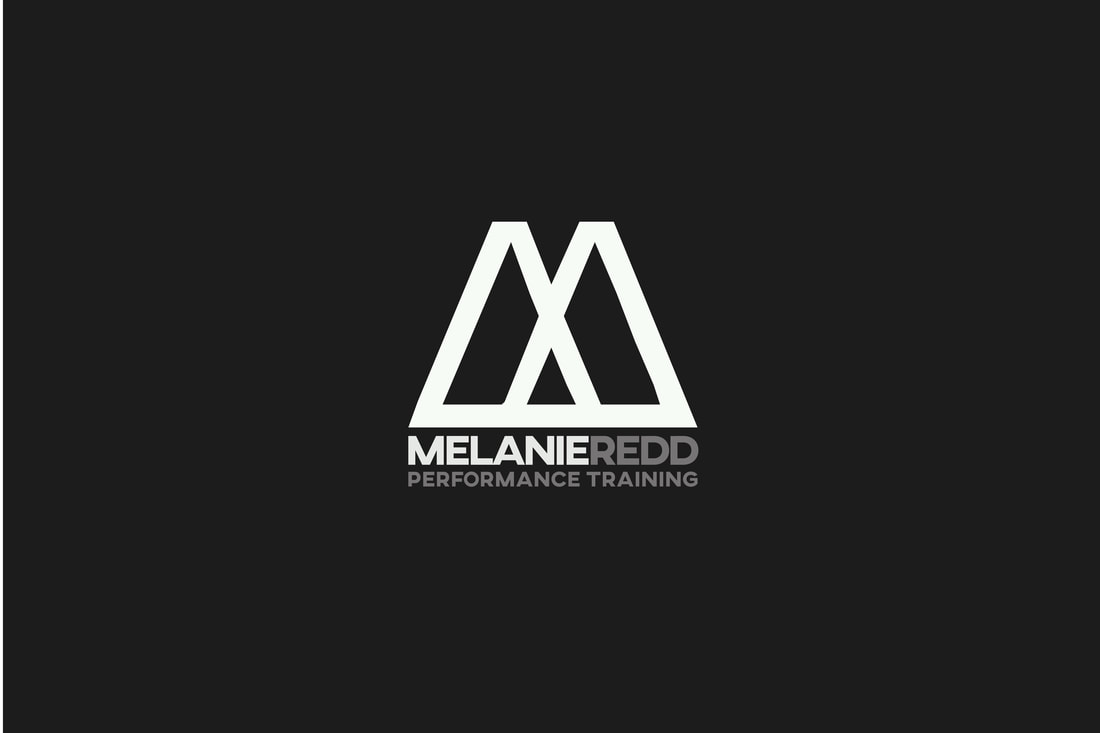Organic Pork loin or chicken breast (1-2 lbs)
1-2 TBSP Coconut oil
Sea salt, pepper, cumin, turmeric, garlic powder, onion powder, ginger, and any asian spices you like (don't overthink how much, just dump that stuff in there)
Siracha (don't worry how much, just sprinkle that stuff on there)
Sesame Seed Oil (just a little)
Fish Sauce (Just a little)
Let it cook and shred with 2 forks when it's finished.
Serve in Cabbage cups and eat like tacos with the following optional chopped fresh toppings:
cilantro, fresh lime, radish, carrot, cucumber and green onion.
The garnishes really make this!
Make enough for left overs. Add more of any seasoning to taste and enjoy!

